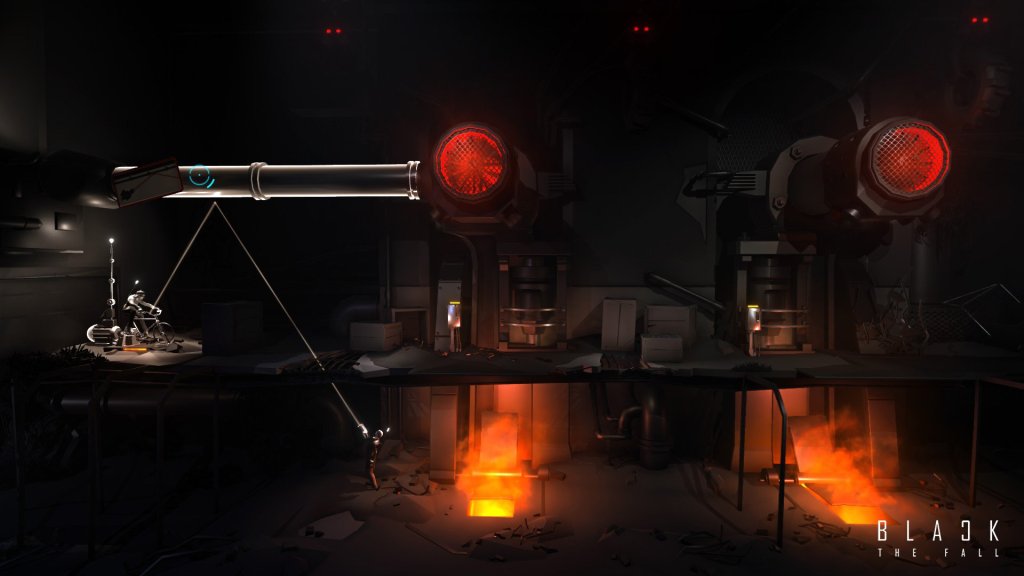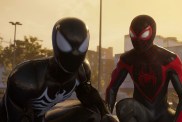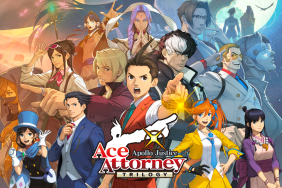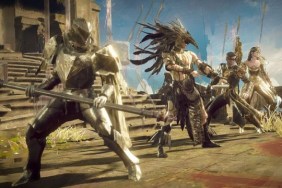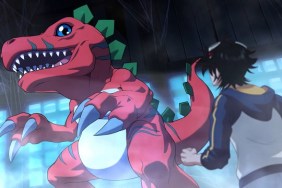
Okay, we get it! Communism is bad! Everything from popular media to history books have driven this fact home, loud and clear. Yet, for some godforsaken reason, this narrative crutch continues to be used in gaming, constantly. At this point, I would even go as far as to call it a cliché, because have you ever seen a game where it was good to be a communist? So with that widely-exploited foundation in mind, it’s time to enter the oppressing world of puzzle/platformer, Black the Fall. Does it avoid feeling like all of its communist-bashing predecessors, or is this just another stumble down memory pain?
Running Man
Usually a key aspect of a game’s setting is knowing something about either the its time period or its geographical location. Neither of these questions, along with countless others, are ever answered. All that the player needs to know is that oppression is bad, and apparently they are under the watchful eye of an extremely vigilant police state. Very little else is known or even said (either verbally or through contextual clues) about the implied enemy. This is somewhat odd, given that the overwhelming drive seems to be escaping from…something. Players will never know what that unnamed something actually is, but it must be a big deal if it’s worth shooting anyone who steps out of line.
Though the overall lack of context and narrative seems to be a conscious choice on the developer’s part, it has unintended side effects. For instance, the lack of any true drive puts the brakes on any sort of motivational momentum, the instant the game becomes difficult. When continuous failure results in constant death, there’s hardly a reason to continue to bang your head against an stationary object. If there was some form of a clearly defined end-game goal, that could’ve helped matters immensely. Instead, the only real campaign propellant is a hybrid of shameless masochism and drive for completion.
Mercifully, for a game that has a strict binary succeed-or-take-a-dirt-nap puzzle structure, it has a very generous checkpoint system. Additionally, after kicking the bucket, the respawn time is damn near instantaneous. This is really the one true saving grace of the core mechanics. These lack of loading times help compliment the blatant trial-and-error nature of each challenge. While I wouldn’t go as far as saying instant respawns help inspire exploration, they certainly make the ever-frequent “error” side of puzzle solving far more tolerable.
If at First You Don’t Succeed…
Most of the puzzles in Black the Fall were fairly rudimentary to unravel. Taking a few seconds to observe the entire environment should be all that is necessary to envision the path to success. How to actually execute on this plan, however, is another matter entirely. Also, there are plenty of occasions where a mechanic that had never even remotely been explored previously, suddenly became the linchpin of an entire encounter.
A perfect example of these mystery mechanics was a scenario where the companion character was blocked from proceeding through a reasonably sized opening, because a box was obstructing passage. Attempting reasonable solutions like pushing the box out of the way or tricking a rogue turret into inadvertently blowing it to bits, while logical, were not possible. In this case, the one way to proceed was to ascend to a platform several stories high and then blindly jump off the edge. Low and behold, this would result in both landing on and splintering the box. In a game that dispenses death more frequently than an auctioneer stammers, it makes no sense that this one arbitrary fall would be survivable, let alone the only method of clearing a randomly placed box. Worse yet, there were no contextual clues that pointed to this as the aforementioned linchpin. How did I actually land upon this resolution, you ask? Simply put, it was a combination of brute force, total frustration, and dumb luck. I accidentally fell off the top-most ledge while trying to see if there were any other interactive items in the environment that I had overlooked.
Things that should be simple, like placing your robot companion in position to provide a boost to a slightly unreachable ledge, ends up being an exercise in futility. At the risk of sounding too confrontational, if there’s only one way to overcome an obstacle and the player is essentially on the right track, is a little “snap-to” aim-assist too much to ask? I mean, the four-legged cohort moves on its own already, so this is hardly beyond the realm of explanation. And don’t even get me started on when the companion doesn’t position itself parallel with the player. Why in the name of all things holy, would I ever want my glorified stool to be on a plain that is either too close to the camera or deeper than the plain that the protagonist runs along? It just doesn’t make much sense from a game design standpoint.
A Glimmer of Hope
The one new element, not to mention single nugget of originality, comes courtesy of the previously mentioned canine analog. From the first moment it’s introduced, it becomes the ultimate secret weapon. This four-legged fiend can do everything from distracting turrets to providing a much-needed boost to areas just out of reach. There comes a point where it becomes blatantly obvious that this doggie doppelganger is in it for the long haul, which was completely fine by me. Despite feeling like an extended escort mission at some points, the new mechanics that it introduced far outweighed its downfalls.
If you were to take a step back and look at Black the Fall on a purely reductive level, it would be hard to find an overwhelming thread of originality. The game is a 2.5D side-scrolling puzzle/platformer, from in independent studio, set in a futuristic dystopian wasteland. Despite sounding the by-product of game design Mad Libs gone horribly awry, it still manages to hold together as a singular experience. Sure, there are plenty of, “where have I seen this before?” moments, but these are spread far enough apart to still feel at least slightly non-conventional. Unfortunately, the proverbial meat of the experience consists of interesting concepts that are executed poorly. Much like what the player will encounter during several puzzles, gameplay itself feels like an ill-informed leap of faith that elicits more far exasperation than elation. Toe the edge carefully and think twice before taking this plunge.
Review code for Black the Fall provided by the publisher. Reviewed on PS4. For more information on scoring, please read our Review Policy here.
-
The companion character helps revive the quickly-stale puzzles
-
Art style compliments the gameplay and setting well
-
Too many puzzles have nonsensical solutions
-
There is no narrative motivation or explanation for what the player is doing
-
Excessive trial-and-error grows tiring quickly without a narrative drive
Black The Fall Review
-
1

-
10

-
11

-
12

-
13

-
14

-
15

-
16

-
17

-
18

-
19

-
2

-
20

-
21

-
22

-
24

-
25

-
3

-
4

-
5

-
6

-
7

-
8

-
9

